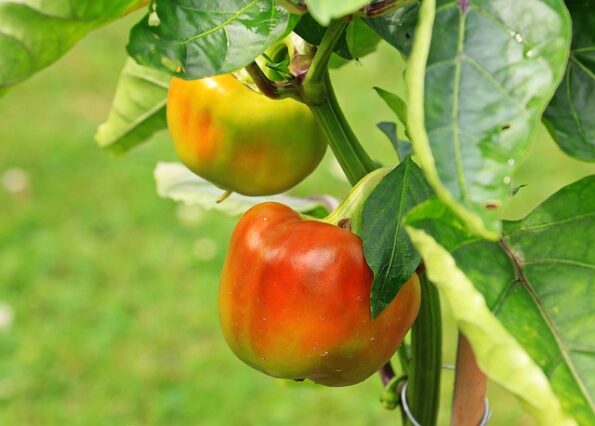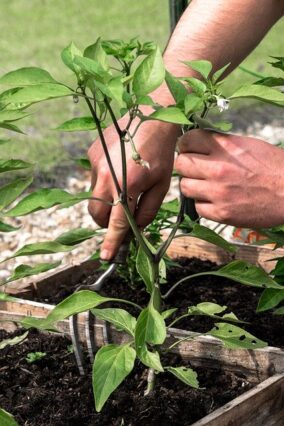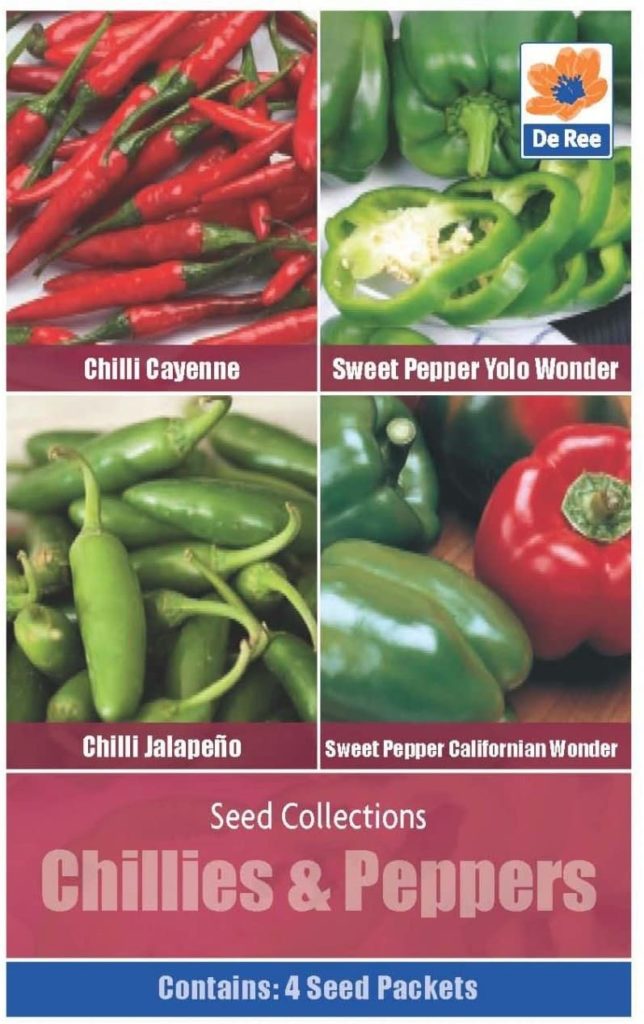Red, green, orange and yellow, sweet peppers add colour, flavour and nutrients to salads and cooked dishes.
There are many varieties of pepper available to buy, so try a few different sorts for an interesting growing season.

Peppers like warm temperature, so they thrive when grown in a greenhouse, sunny windowsill or a sheltered, sunny position in the garden.
How to Sow Pepper seeds
Sow seeds indoors from February to April.
You can use seed trays or modules, filled with a good quality seed compost. Modules are a more hassle free way to grow seeds, as you do not need to prick the seedlings out into pots and it also keeps root disturbance to a minimum. You can also just sow them in small pots. Once sown, keep the compost moist.
Pepper seeds have a good germination rate, but benefit from being covered with the lid of a propagator if you have one. If not, you can make your own ‘propagator’ by cutting the top of a large, plastic pop bottle. Place it over the individual pots to create a warm, mini environment for the seeds.
Growing Peppers
Once the pepper plants begin to grow, they will soon become too large for their pots. They should planted in a new pot or container that is a bit bigger, to allow them to grow more. Their final pots should be approximately 12 inches in diameter, or three pepper plants can be planted into a grow bag.
If you are planting in soil, dig in some good garden composts first. Make sure the soil is free from weeds and it is free draining. Space each pepper plant approximately 2ft apart, so you have enough room to walk around the plant and to give it enough space to grow.

If you are planting peppers outside, harden off by gradually exposing the plants to outside temperatures for increasing amounts of time before planting. Make sure there is no chance of a late frost if growing peppers outside.
Support each pepper plant with a garden cane. This is because the plants can become heavy once the fruit develops.
Once pepper plants grow to approximately 18 inches, pinch out the top growth to help the plant bush out. This helps to create a stronger plant.
A weekly feed of an organic liquid fertiliser that has plenty of potash, or you can make a comfrey solution, will help to produce a decent crop. Apply once the flowers begin to grow.
Harvesting and Storing Peppers
Peppers can be harvested as soon as they are a size that is worthwhile eating. The fruit starts off green, then ripens to a yellow, orange or red, depending on the variety. The more red the pepper becomes, the sweeter the flavour. To harvest, cut or snip the peppers from the plant.
Peppers store for approximately two weeks in a fridge. They also freeze well, but the texture is not the same as a fresh pepper. They are still good to use in cooked dishes.
Dried peppers will last for months. Cut peppers into strips and put on a tray in a warm oven. It doesn’t need to be hot because you just want to dry, not cook, the peppers. Keep the oven door open a little to let steam out. There are also dehydrators that you can buy that are specially made for the job of drying food.
Growing peppers and storing a glut of produce is a good way of enjoying them all year round, so choose some pepper seeds and give it a go!

